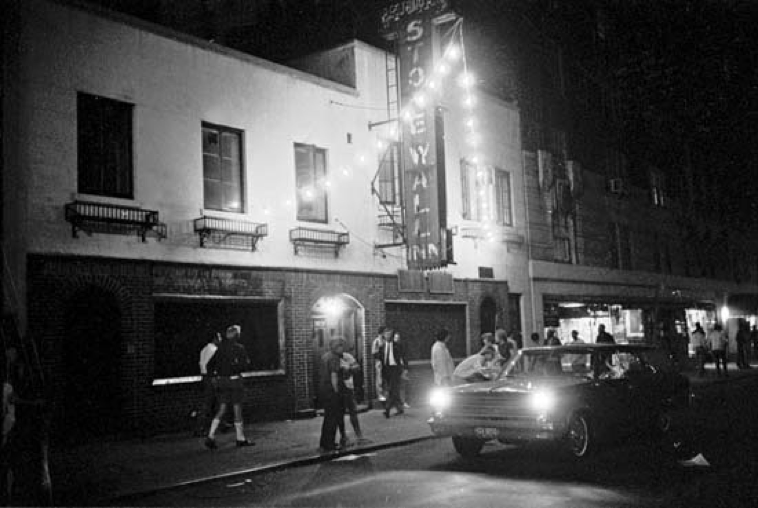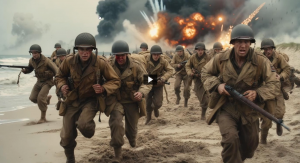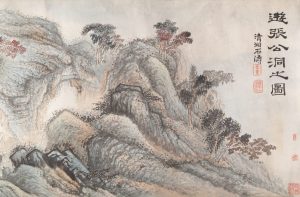Forced to retreat into the very establishment in which they were running people out off, the fearful and injured eight detectives were able to push and create a path for themselves. Once inside, they boarded the doors of the Stonewall Inn and called for backup. At the moment, the bar served as their only protection from the angry rioters outside. Before they knew it the Stonewall Inn, ironically their only sanctuary at the moment, was breaking. Windows around them were shattering and Molotov cocktails were thrown in. Flames, although not very strong, began to build around them.1 Soon after, the front door was broken down leaving the detectives exposed and vulnerable. One would agree that feelings of dread, lonesomeness, and hopelessness were the emotions that filled the detectives, as would anyone in their situation. However, these were familiar everyday feelings that the rioters outside had long felt. But how did we get to this moment?

On the hot summer day of June 28, 1969, a rather morbid atmosphere filled the air of the Stonewall Inn as people were mourning the recent death of Judy Garland, a popular actress known for her role as Dorothy in The Wizard of Oz. She was greatly adored in the gay community.2 Sadly, the gay community could not say that they felt any adoration or appreciation as Garland was receiving. What they felt was quite the opposite. This is why many gays frequented the Stonewall Inn. The Stonewall Inn, located in Greenwich Village, a neighborhood of Manhattan, New York, was a home to many homosexual individuals, as they could gather there free of social and political judgement. Outside of their safe haven, all hid their true identities and selves, putting on a façade for others to see. When some men were “outed” or labeled as being as homosexual, only true hell was to follow, with no light at the end of the tunnel. Homosexuals were treated as abominations by strangers, their own families, and even the law. The year 1952 marked the establishment of the McCarran-Walter Act. This act was a revision to an existing immigration law that allowed one to be deported, or to be denied entry to the country if one were a “psychopathic personality.” Conveniently, a homosexual fitted the profile of a psychopathic personality in the eyes of the law. Homosexuality was even treated as a mental disease at this time. Arrested homosexuals were often sent for psychiatric evaluation, and most were found as having psychotic tendencies and personalities. Psychologist and psychiatrist would perform counseling and treatments in order to “cure homosexuals and revert them back to their original state.” There were even extreme cases in which lobotomies were performed on homosexual individuals. However, people believed that science wasn’t the only method of treating homosexuality. The other treatment was religion and prayer. American church congregations had been taught to believe that homosexuality was a form of sin and that the devil was to blame. In order to rid oneself of sin and these temptations, one could “pray the gay away.” Although not to the same degree, we still see both these problems today, especially within the church. In 1969, one could even find themselves on the front page of the newspaper, shamefully describing their sexual orientation. Soon after, they would lose their job, insurance, credit, and family. Homophobia doesn’t discriminate, and all these problems were also known to effect homosexual women as well.3

The Stonewall Inn was also a popular spot where many came to illegally drink and dance. Bisexuals and drag queens also frequented the bar. At this time in the United States (1969), much like it is in current day Russia, it was illegal to cross dress, dress as a drag queen, and serve alcohol to homosexuals. These “laws” were constantly being broken; so, police would perform frequent raids on bars that they suspected of housing gays and ones that they thought were illegally serving alcohol without a license.4 On this specific night, the police obtained a warrant and were scheduled to perform a routine raid on the Stonewall Inn at around 2:00 AM, when the people inside would least expect it. The officers believed they were adequately prepared as no serious problems or resistance were known to occur when homosexuals were involved. Little did they know they were in for a rude awakening. As they barged into the bar, two bright-white lights flashed on the dance floor, a well-known signal within the gay community. This indicated to everyone that the police were present. Immediately, the eight detectives demanded for everyone to leave the bar, including the staff, and line up outside with their identification. The people inside, though angry and irritated, followed the orders given to them. With individuals lined up against the Stonewall Inn outside, a police wagon then pulled up, opened, and officers then began to arrest multiple drag queens, people without proper identification, and staff. As people were being detained, enraged onlookers yelled “Pigs,” “Abuse of Power,” and “Police Brutality” to the detectives. An uproar then followed. No one knows today who exactly started the riots, but one can agree that the community finally snapped. The years of abuse, the treatment directed to Lesbian, Gay, Bisexual, Transgender, and Queer (LGBTQ+) individuals, and the fact that they were to be arrested for being who they were, finally lead up to that moment. That was the moment when they had had enough. And at this moment, multiple people reported that a drag queen escaped from the hands of one of the detectives, turned around, and punched them in the face. This one punch would be responsible for starting a revolution.5
This action triggered almost everyone involved to begin throwing bottles, stones, and other objects at the detectives and their vehicles. As you can imagine, things only escalated from there, leading the police then to run back into the bar for shelter. Rioters managed to break off a parking meter and began to beat the door of the Stonewall with it. Once that shelter was breached, drag queens and homosexual men threw punches at the police as the police threw punches at them. Quickly word spread through the city and hundreds of onlookers, mostly from the LGBTQ+ community, gathered outside the bar. The uproar then continued to grow tremendously.

When reinforcements arrived, more specifically the Tactical Patrol Force, they fought head-on with all the rioters. The Tactical Police Force were dressed in helmets with visors and were in body armor. They also yielded tear gas, riot shields, and other weapons. The Tactical Police Force linked arms and attempted to sweep the streets clear of people but they inevitably failed. Their numbers were small compared to how many rioters were present. From this, they had no other choice but to charge into the crowd. Men and women were brutally clubbed to the ground, and police force members were injured from different objects being thrown and blunt force from rioters. It wasn’t until after 4 AM, that the police were officially withdrawn.6 However, the riots did not end. Some rioters were arrested and charged with assault, resisting arrest, selling alcohol without a license, harassment, and for many other reasons. Even after the withdrawal of the police, people roamed the streets and continued to gather together chanting their opinions on the police and everyday people.

The Stonewall Riots continued for days to come and grew more violent with each day. Once Greenwich Village was settled and calmer, many visited the Stonewall Inn to see the damage that was left as a result. Streets were filled with trash and graffiti was drawn on the Stonewall Inn with slogans stating, “Legalize gay bars.” Word spread across the United States of how LGBTQ+ members were tired of being oppressed and segregated, and how they would use violence if necessary, in order to be treated as equals. These riots, a foundational event, sparked many LGBTQ+ movements, gave people the confidence to oppose the government, and gave them the courage to demand that they be treated as humans and not as scoundrels. Slogans such a “gay power” and “homosexuals are human too” began to appear. In the following month of July, organizations that focused on the empowerment of gay individuals were established. The first is known as the Gay Liberation Front (GLF). Although, there are still problems being faced today within the LGBTQ+ community; such as transgendered rights, the Stonewall Rioters were key factors in their movement up the social and political ladder.7 What took place at the Stonewall Inn is a story that isn’t commonly shared or taught in history books or classes today. Regardless of the fact that the people directly involved are homosexual individuals, history is history, and it should be shared so that we are not doomed to repeat ourselves.
- Walter Frank, Law and the Gay Rights Story (New Jersey: Rutgers University Press, 2014), 32-39. ↵
- Encyclopedia of Lesbian, Gay, Bisexual and Transgendered History in America, 2004, s.v. “Stonewall Riots,” by Fred Wasserman. ↵
- Walter Frank, Law and the Gay Rights Story (New Jersey: Rutgers University Press, 2014), 22-31. ↵
- Encyclopedia of Lesbian, Gay, Bisexual and Transgendered History in America, 2004, s.v. “Stonewall Riots,” by Fred Wasserman. ↵
- Encyclopedia of Lesbian, Gay, Bisexual and Transgendered History in America, 2004, s.v. “Stonewall Riots,” by Fred Wasserman. ↵
- “4 Policemen Hurt in ‘Village’ Raid,” The New York Times, 29 Jun. 1969. ↵
- Scott Bravmann, “Stonewall, Silver Screen: Cinematic Representation and the Queer Past,” American Quarterly 48, no. 3 (September 1996): 491-499. ↵



74 comments
Joel Gracia
This was an extremely well written article on a topic that not enough people know details about. I enjoyed reading it because of its ability to showcase the power that large group of people united through cause can possess. It truly shows how far the gay community has come in terms of persecution, and I hope that they only advance more in the future because of this kind of determination.
Cameron Ramirez
I will have to admit that I had no clue and no prior knowledge of the Stonewall riots. Your article on the riots was so informative and well written that I couldn’t believe this was a real thing that happened. It is so sad that people who are LGBT had little to be attacked for loving someone who is the same sex as them. Anyway, excellent article, it’s unfortunate that even today many people don’t have the equal rights as others do.
Alejandra Chavez
Thank you for enlightening many of us with this very well written and highly informative article. I always love reading about times when people just get fed up, snap, and make a change. I lover the way you described the way the LGBTQ+ community snapped and took back authority from the corrupt system. The way this article was written not only made me feel enlightened but gave me a sense of empowerment. Great article.
Angela Rodriguez
As the LGBTQ community continues to voice about their rights, they are still not accepted as human beings. Although they just passed the law for same sex marriage in the United States, there are still massacres happening around the world because of the growing LGBTQ community. While Stonewall is just one of the countless events that has happened within the community, it is important for others to understand the struggles they encounter.
Deanna Lummus
Wow! I had no idea this even happened. I knew back in the day that people didn’t like gay people but I never really realized how much they were opposed to them. This is heartbreaking considering how many people were definitely injured all because some people don’t like how certain people “like” people they are apparently not supposed to. Who are the police, insurance companies, and doctors, to say that someone cannot have the same treatment as anyone else who simply lives their life and gets to be themselves? Great article by the way!
Edward Cerna
I’ve never heard of this riot before reading this article and this did an amazing job on informing me on it. I like how you set up the article and I felt like you did a really amazing job with the research. The introduction was real enjoyable to read as it really caught my attention and made me want to read more.
Sebastian Castro Ramos
As many other groups throughout history, like African Americans, the LGBTQ community has been subject to discrimination and violence because of they differ in some aspects with respect to the majority of the population. I hope that the discrimination against these people that still exists today can come to an end. They are human beings too, and they deserve to be happy just as much as everybody else does, so I believe that as long as they don’t do harm to others, they should be free to do what they want.
Karina Nanez
What an empowering article to read. The Stonewall Riots were truly the start of massive movement, as you wrote, this was the beginning of homosexual men and women to demand their equal treatment. This was a Fantastic article to read, you really captured what the struggle was for these gay men and women in a time when they weren’t considered human or sane.
Zeresh Haman
I have never heard of this and this article did a great job of informing me. The way that the article was written really gave us a readers a sense of what the conflict was like. This article was able to keep me very intrigued throughout the whole thing. The riots were a way for these people to stand up for what they believed in.
Andrea Chavez
This is a very interesting article; I really did enjoy the introduction. It is very interesting how I can see the passion in every sentence written. In a way it leads me to believe the writer is very passionate about LGBTQ+ subjects, and defensive about them. This particular riot can be said to have started all the future movements of the LGBTQ movements. It was very impressive to see that they could beet of the police force.